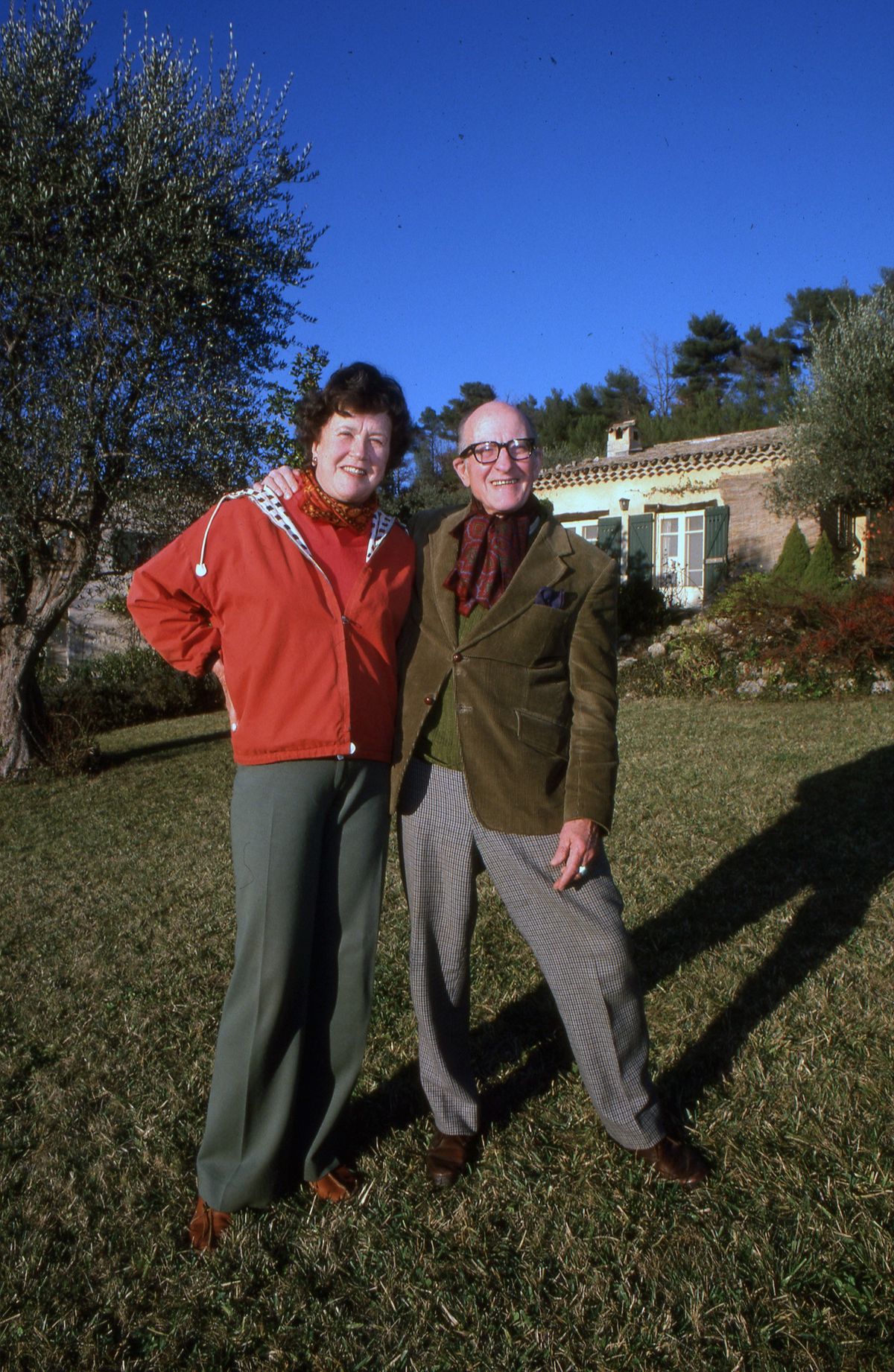Review: ‘Julia’ documentary offers admiring portrait of Julia Child and her impact on foodie culture

It seems like you can count on one hand – and still have a few digits to spare – the number of pop culture heroes we’re still free to admire without asterisks. Thank goodness it’s still OK to worship at the butter-spackled altar of Julia Child, the late cookbook author and food-TV pioneer. “Julia,” a documentary that examines Child’s life and influence on American cuisine and culture, goes down like a sweet crepe Suzette and thankfully does little to complicate a lifelong fan’s feelings.
Anyone familiar with Child will recognize the touchstones of Julia lore: her lifelong romance – and midday trysts – with her husband; that meal of sole meunière that made her fall in love with French cuisine (both of which were memorialized in the 2009 feature “Julie and Julia” starring Meryl Streep and Amy Adams); and the epic work that went into her classic cookbook “Mastering the Art of French Cooking” written with Simone Beck and Louisette Bertholle. We get yet another tour of the pegboard-lined kitchen from the Child’s Cambridge, Massachusetts, home that’s so famous it’s now in the Smithsonian.
Though “Julia” breaks little ground, it offers a rich view of Child’s remarkable life, from her upbringing in the starchy confines of an upper-class Republican family in Pasadena, California, to her marriage to cartographer Paul Child and their life in France, as well as her decadeslong career as a groundbreaking TV host. But it’s the images of the film’s subject – an imposing presence at 6-foot-3, with a cap of signature curls – that offer the most lingering impression.
“Julia” makes much of Child’s embrace of the sensual – French food and wine and carnal pleasure – and the journey is told most convincingly through snapshots. One photograph shows Child as a newlywed in France stretched out on her back in a field, her arms flung wide. In another, she and Paul pose together, nude, in a bubble bath.
The visual feast continues in the form of close-ups, interspersed throughout, of a pair of hands cooking some of Child’s best-known dishes, a trick that allows the viewer to imagine we are watching Julia herself. Glistening morsels of beef and mushrooms tumble in a red wine sauce in beef bourguignon; poached pears seductively drip with syrup; and a completed hollandaise sauce looks like silk.
There’s also a highlight reel of Child’s years as the host of the public TV show “The French Chef,” which debuted a year after “Mastering” was published in 1961. Child’s goofy onscreen persona – whacking away at goose liver, brandishing a mallet and mugging with a massive fish – is on display. But we also come to understand how Child marshaled that theatricality to inspire a generation to give up the processed foods of the day for the buttery, bony cuisine Child championed.
The culinary A-listers interviewed include José Andrés, Marcus Samuelson and Ina Garten, who smartly contextualize Child’s impact on food media. Without Child, it’s difficult to imagine an Emeril Legasse or a Rachael Ray – or even the legion of Instagrammers who now populate our feeds with cheeseboards. And the film makes a convincing case for Child as feminist icon: her marriage to a man content in her shadow (Paul was often the one scrubbing pots on set); her persistence at the male-dominated Cordon Bleu cooking school in 1950s Paris; and her work for Planned Parenthood.
Directors Julie Cohen and Betsy West, who made “RBG,” are on familiar ground here. This lens offers perspective on Child’s determination to stay on television long after most people – women in particular – are shuffled off. We see in a new light her unwillingness, when she was entering her 70s, to be nudged offscreen. Instead of seeing this as a star unable to accept that her cultural moment had passed, we come to understand her as a woman insisting on writing her own script.
The film does more interesting work in dealing with Child’s later years, too. We learn that she privately used a homophobic slur. But when her attorney and friend Bob Johnson died of AIDS in 1986, she became an advocate for awareness of the disease. “Julia” is otherwise unfailingly admiring of its subject, yet it doesn’t come off as hagiography. It’s great fun to watch people who knew and loved her reminisce, but mostly it’s a pleasure to spend a little time in the company of the woman who saved America from Jell-O salad.